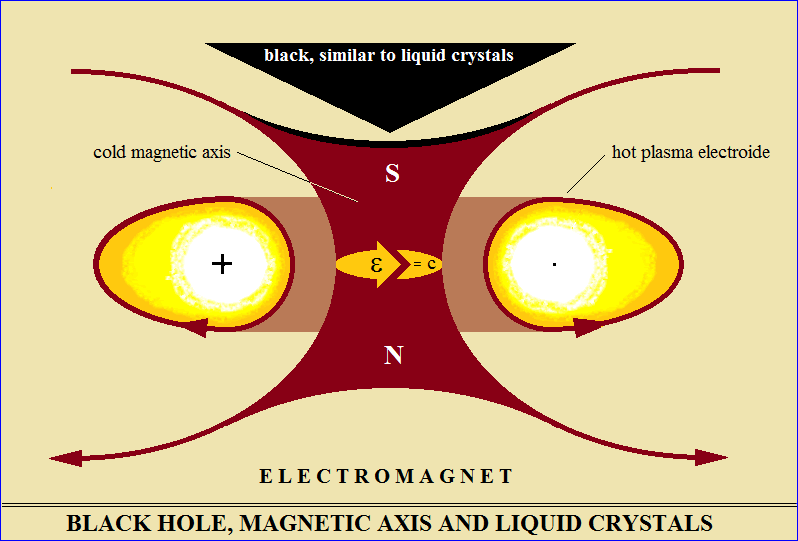Black
hole
The structure of the magnetic axis of the earth.
The earth's electromagnetism axis has astronomical structure and features.
The characteristic stems from the rejection forces between the magnetic
vectors.
In electromagnetism, magnetic forces produce angular acceleration, and
electrical forces produce the centripetal acceleration - the plasma toroid
(the electroide).
Magnetism from the outside of the electroide is a whirly that extends
centrifugally,
and the magnetism inside the electroide compresses and forms the magnetic
axis
- the spinning magnetic field -
The high intensity of magnetism in the center of the magnetic axis is
the cumulative effect of the electroide shrinkage, the pressure of its
magnetic forces, and the properties of the magnetic vectors to reject
each other.So, the center of the axis can attract ferromagnetic elements
and form with them an ellipsoid with higher rotation motion than that
of the planet. Logically, such an object suspended in the magnetic field
can self-accelerate at unimaginable rotational speeds.
There are images in the universe that can be attributed to such an interpretation.
The core of the earth is suspended so as to produce polar auras.
The magnetic core is hot, or cold? Emits radiation, or not?
Increasing angular acceleration eliminates polar hemispheres and the earth
becomes black hole?
The black hole is a form of matter organization, characterized by the
dark image in the center of rotation, called the black hole and the angular
acceleration near the speed of light.
Like the bodies of the universe, the black hole has an electromagnet structure,
which requires explanations of the peculiarities. The centripetal electromagnetic
force compresses the substance into the electroid. The electroid sucks
the substance, even the light beam, as Einstein says.
So, the electroids also sucks the substance from the magnetic axis!
Magnetic axis is devoid of substance and radiation! It's cold!
Only the angular acceleration of the magnetic axis approaches the speed
of light!
Magnetic poles behave like a liquid crystal display, polarized on black!

